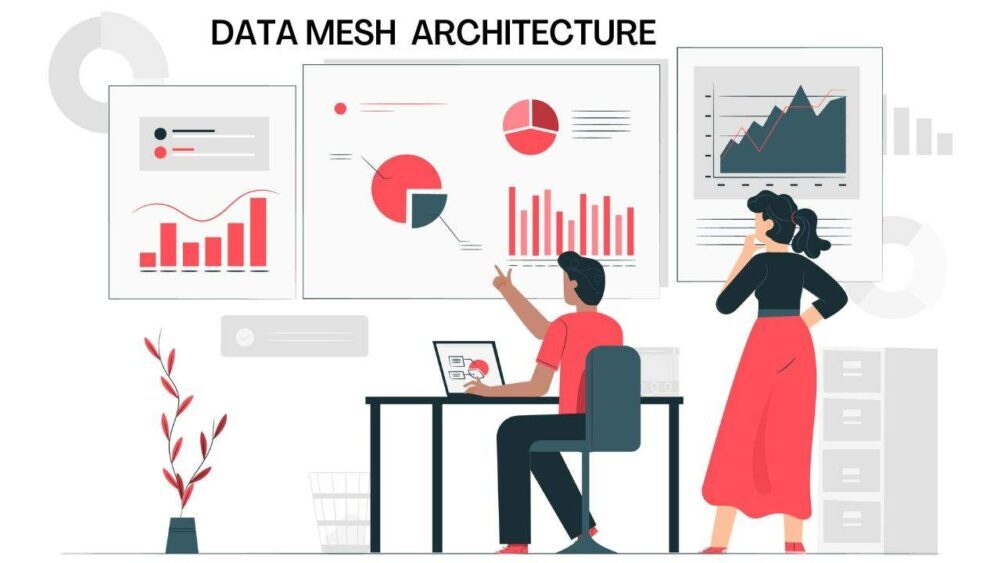A Data Mesh Architecture is a set of data services that provides consistent capabilities across a choice of endpoints. With spanning hybrid multi-cloud environments. It is a powerful architecture that standardizes data management practice, across the cloud, on-premises, and edge devices. Data mesh is a standard architecture which provides data services. It is an end-to-end data integration and management solution. It consists of architecture, data management and integration software, and shared data, hence it helps organizations to manage their data. Which provides a unified, consistent user experience and access to data for any member of an organization worldwide. Which occurs in real-time.
Data Mesh Accessibility:
Many organizations of data-centric needs a holistic approach that overcomes the hurdles of time, space, different software types, and data locations. Data needs to be accessible to users, especially those who need it. It should not be locked away behind firewalls or located piecemeal in a range of locations. Businesses need a secure, efficient, unified environment, and future-proof data solution, which enables them to thrive. A data mesh Architecture provides all the specific solutions in order to thrive.
In the latest generation, Traditional data integration is no longer in use. Because Meeting new business demands of real-time connectivity, self-service, automation, and universal transformations for transparent business management. Collecting data from various sources is not usually the problem. Many organizations cannot integrate, process, curate, and transform data with other sources. This crucial part of the data management process happens and leads to the delivery of a comprehensive view of customers, partners, and products. This gives organizations a competitive edge. And finally, It helps them to get better customer demands, modernize their systems, and harness the power of cloud computing.
Data mesh is like cloth, as it is all across the world. And wherever the organization’s users are they can comfortably acquire it. The user can be at any place in this fabric and still access data at any other location without any constraints, in real-time. Data mesh is also data fabric. Is designed to help organizations solve complex data problems and also use cases which occur. It is done by managing their data—regardless of the various kinds of applications, platforms, and locations. Where the data stored. Data fabric enables frictionless access and data sharing in a distributed data environment which helps people to use it without any constraints.
IBM Data Fabric vs Internet
The internet was created to connect human beings all over the world, it is a global network of billions of computers and other electronic devices. it’s possible to access almost any information due to the internet. As it was the only feature which helps connect people, the transfer of quantified data was minimal. But as the IBM data fabric has arrived in the world the activities on digital platforms have surpassed initial forecasts, and data has become a world in itself. Any activity which is either online or in real life is classified as providing data. While this data grows by leaps and bounds, it is necessary to establish an infrastructure which manages it.
In the past, the objective was to manage data, and as a bonus, extract insights from it, but As time flew by, the focus started moving from simply managing data to being able to extract insights from that data and provide the analytics. And now with a data fabric, the focus is shifting from simply managing data, to enhancing the quality of the data itself, availability of the information, and the automated insights derived from it.
Uses of a Data Fabric?
In this generation, the number of associates is entering the networked environment very quickly with an increasing speed. Because Nowadays everyone is connected to the internet, and every platform has become a source of data. Taking full advantage of the value of data has become a complex problem.
The Challenges of today’s data include:
- Located in multiple on-premises and cloud locations
- Structured and unstructured data
- Different data types
- Different platform landscapes
- Maintained different file systems, databases, and SaaS applications
Data is growing exponentially, so these problems are multiplying each and every second.
Together, these problems and variations make it very complex to easily access or use data. And, if organizations want to productize or personalize (AI and ML), they need their data collected, transformed, and processed.
Today, most organizations tend to deal with the problem of stowing towers, creating many different ways of managing the data all over one association. Though this solution makes the data available to particular groups, accessing it company-wide becomes nearly unbearable, often downgrading the data to sit indolent and unused.
Lack of inclusive data is access. And it results in an unfortunate return on investment on the infrastructure, lack of obtainability of data to produce useful forecasts and lower productivity. Under such conditions that data mesh comes to the rescue.
Data Mesh Mrchitecture Station.
Currently, many organizations are using data lakes and data warehouses for managing data the organizations. Though, on closer inspection, these approaches are more technology-intensive slightly than data-centric. With data lakes and data warehouses, the importance is to collect or extract the raw data and store it. It and use it when insights are the result. These solutions are not intended with today’s problems in mind and make it difficult to get a combined view of the data. However, these techniques often lead to latencies and increasing costs. With the growing amount of data and the time constraints with which the decision makers of organizations work, delays in data access and processing are not desirable. In such scenarios, data fabric gives the advantage of storing, extracting, and processing data at the source point in real-time, allowing decision-makers to have insights on the go.

